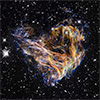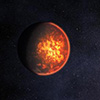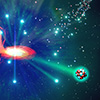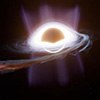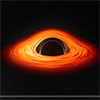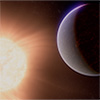Moons of Jupiter
There are 79 known moons of Jupiter, not counting a number of moonlets likely shed from the inner moons, and S/2003 J 24, whose orbital elements have not yet been published. All together, they form a satellite system which is called the Jovian system. The most massive of the moons are the four Galilean moons: Io; Europa; Ganymede; and Callisto, which were independently discovered in 1610 by Galileo Galilei and Simon Marius and were the first objects found to orbit a body that was neither Earth nor the Sun. Much more recently, beginning in 1892, dozens of far smaller Jovian moons have been detected and have received the names of lovers (or other sexual partners) or daughters of the Roman god Jupiter or his Greek equivalent Zeus. The Galilean moons are by far the largest and most massive objects to orbit Jupiter, with the remaining 75 known moons and the rings together composing just 0.003% of the total orbiting mass.
Of Jupiter's moons, eight are regular satellites with prograde and nearly circular orbits that are not greatly inclined with respect to Jupiter's equatorial plane. The Galilean satellites are nearly spherical in shape due to their planetary mass, and so would be considered at least dwarf planets if they were in direct orbit around the Sun. The other four regular satellites are much smaller and closer to Jupiter; these serve as sources of the dust that makes up Jupiter's rings. The remainder of Jupiter's moons are irregular satellites whose prograde and retrograde orbits are much farther from Jupiter and have high inclinations and eccentricities. These moons were probably captured by Jupiter from solar orbits. Twenty-two of the irregular satellites have not yet been officially named.
Check out these latest Nanowerk Astronomy & Space News:





